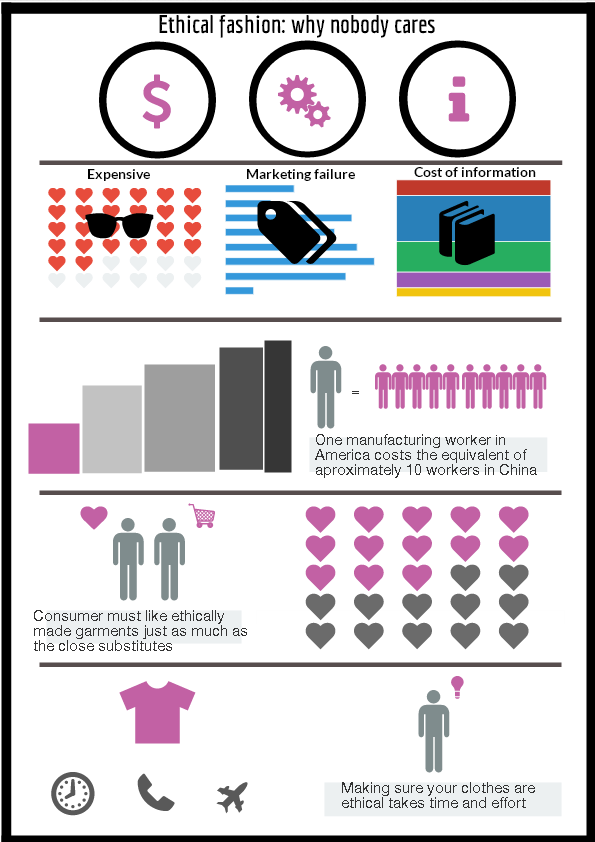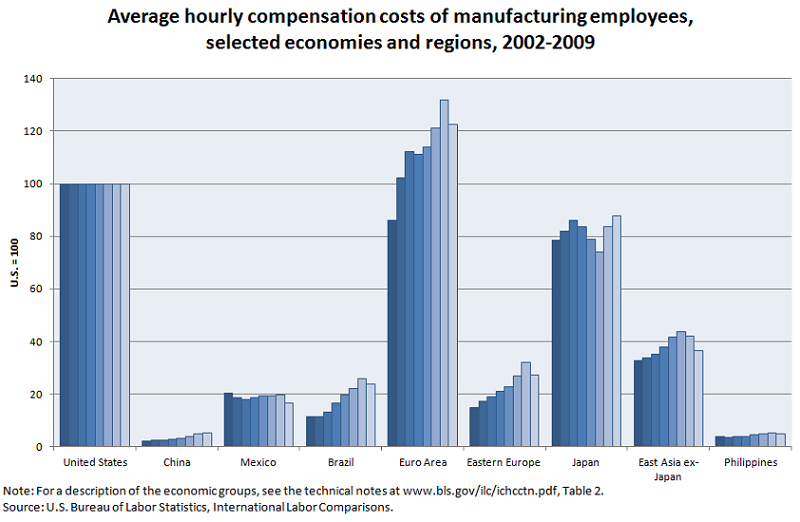There has been a lot written about ethical fashion and there is a growing industry devoted to inform and manufacture ethically produced clothing and accessories, but when I talk to people around my age, near where I live, California, most of whom have a college education and a moderate interest in fashion, nobody seems to have heard about the topic; I mentioned it to my waxing lady today and it was news to her.
Why is it that the message has not permeated the masses and remains a very closed niche? Why don’t “regular people”, even if interested in humanitarian and environmental causes seem to be more open to wear and support the ethical fashion cause? Here are my 3 reasons:
1. Ethical fashion is expensive
Making things outside of the system or generalized model (usually optimized for efficiency) is expensive. When the supply networks, industry standards and consumer demand have been molded according to fast fashion principles, making slow fashion is simply more expensive. “Made in the USA” has become a trend in the ethical fashion spectrum, but just as an example, the average hourly compensation of manufacturing workers in the US was more than ten times that of Chinese workers for the period of 2002-2009.
Part of that phenomenon can be explained by the existence of externalities: when making clothes cheaply, the real economic costs are not paid by the end consumer, but by different parties involved directly or indirectly in the production process. Scale is another issue; established brands with a solid supply chain can make products significantly faster and cheaper than an independent designer with limited capital.
2. A marketing failure
Ethical fashion doesn’t mean ugly hemp hippie clothes or African prints. I think some designers and founders of the movement have associated the expressions “ethical” and “sustainable” with certain things that don’t have a lot to do with the core of what those words stand for, often including an “ethnic” look to their pieces, instead of making nice, versatile and stylish clothes that people want to wear.
The average consumer is not going to buy something just because is eco-friendly or made ethically, especially if it’s more expensive than the alternatives; the challenge is to make clothes just as appealing as the cheaper mass produced alternatives but to differentiate on quality, customer service, design and uniqueness.
3. The cost of information
Staying informed about what is being done in terms of supply chain transparency, ecological business practices and proper working conditions by your favorite brands is time consuming and sometimes not very easy at all. A lot of money is spent on hiding the injustices of big fashion makers and trying to present certain brands as if they were “sustainable” with poor data in what I consider a shameless PR move (more information on what I’m talking about soon). (Update 12/03/15: read H&M needs more than a conscious collection).
There are some resources out there but I have found it hard to rely on one source for my research. Through the process explained in a recent post, I try to get as much information as I can and make an educated decision, but until there is an international auditing body devoted to bring these facts to the public, it does take time and effort to figure out if that peplum top is really ethically produced or not. Bloggers, writers and fashion executives are becoming more interested in the matter and the information is becoming easier to get. As we demand more complete details about the production process, companies will have to disclose more information in order to remain competitive.
I believe that a few years from now, we are going to question how reckless we once were when it comes to outsourcing and corporate responsibility transparency. Not only in the fashion industry, but in most goods produced for the American market. If we are talking about “ethical” fashion now is because it’s still rare it needs its own category and to be marketed that way. It is in the hands of the developed world to take action and realize we don’t really need a hundred dresses in our closet, but rather fewer things that serve a good purpose in every sense of the word.
Last updated: December 3, 2015 at 6:19 pm PST


